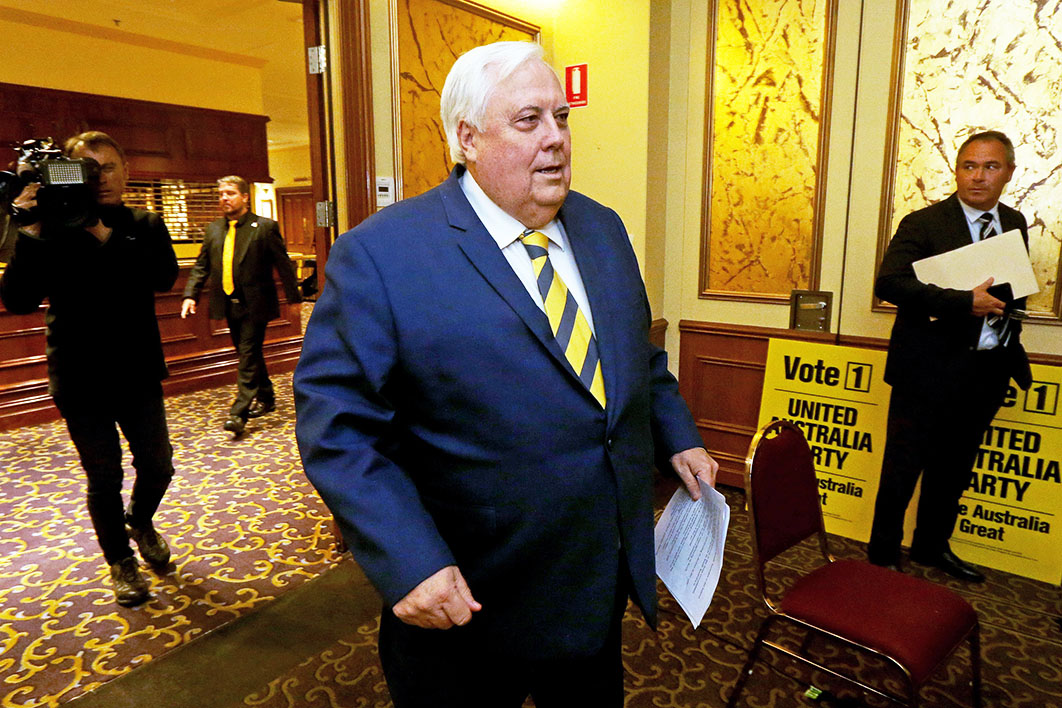If this election were taking place not in Australia but in Britain or Canada, with their first-past-the-post voting systems, how would the horse race look?
Tuesday’s Essential poll has the Coalition easily in front on primary support, 38 per cent to Labor’s 34. Morgan sings from the same sheet, 38.5–34. Newspoll and Ipsos, released on Sunday night, have 38–36 and 36–33 respectively. The only poll that doesn’t put the Coalition ahead is one Galaxy released two weeks ago, with 37 per cent apiece. In this alternative universe, the betting money would be flowing to the Morrison government.*
But of course we have full compulsory preferential voting — you must number every square! — and it’s two-party-preferred votes that matter. On this measure, all the pollsters have Labor ahead, either 51–49 or 52–48.
That’s very close. And of course a majority of votes doesn’t guarantee you win the seats. Labor got 51 per cent in 1998 and still fell well short.
Those two-party-preferred numbers also involve lots of guesswork. The pollsters estimate from primary voting intentions, and the lower the total major-party primary vote, the trickier this exercise is.
They mostly (but not all) use preferences as they flowed from the minor parties and independents at the last election, but those numbers aren’t necessarily set in stone. For example, One Nation preferences flowed Labor’s way 50.5–49.5 at the 2016 federal election, but that was largely because it preferenced Labor in more seats than it preferenced the Coalition. (By “preference” we mean made recommendations on its how-to-vote cards.)
This had the most spectacular effect in Longman, Queensland, where One Nation preferences flowed 56.5 per cent to Labor and tipped out the sitting member, Wyatt Roy. At the same electorate’s by-election last July, One Nation preferenced the Liberal National Party, and its preferences flowed a whopping 67.7 per cent the LNP’s way.
(Incidentally, presumably because of that by-election result — a 3.7 per cent swing to Labor and an easy retain with 54.4 per cent after preferences — few election-watchers seem to have Longman potentially in play this time. But with One Nation again preferencing the LNP, it’s a good chance of a pick-up for the government on 18 May.)
Like One Nation, the flow of United Australia Party preferences will depend on the kind of voters it attracts in the first place — Labor- or Coalition-leaning — how many have how-to-vote cards thrust into their hands, and how many take any notice of them. Most people don’t follow the cards, but enough do to make a difference in close contests.
In 2013 Palmer United Party preferences favoured the Coalition 54–46. Despite preferencing the Coalition everywhere, Clive Palmer was a more left-friendly cuddly figure back then — not yet the boss from hell, still sympathetic to asylum seekers and very anti–News Corp. There is evidence he took more primary votes from Labor than the Coalition and churned, via how-to-vote cards, perhaps a fifth of them into Coalition votes after preferences.
This time he’s a much more Trumpian entity, contesting One Nation turf. So rather than turning, say, 44 per cent Coalition support into 54 per cent, the UAP might be turning 55 into 65.
The pollsters’ preference estimates also matter in another way: they are likely to be overstating support for the minor parties included on the list they read out to respondents. Take the Ipsos poll, which has the Greens on a ridiculously high 14 per cent. Like all parties included in the party readout, it’s artificially inflated, and support for the major parties is correspondingly too low.
But it hardly matters when it comes to the two-party-preferred estimate, because Greens how-to-vote cards don’t have much effect. (Their supporters tend to be sure which major party they prefer.) Assuming the Greens wind up polling around 10 per cent on election day, then the other 4 per cent are likely to vote according to the flow of Green preferences used by Ipsos, which is presumably last election’s 82–18 in Labor’s favour.
But if One Nation and UAP are being overstated by, say, 1 per cent each, in what proportions will they return to the major parties? The recent pollsters’ total major-party tallies range from 69 to 74. (At the 2016 election it was 76.8.) For reasons already given, we can expect it to be around or above that top figure on election day. The final polls, of course, will be closer to the true amount.
The best scenario for the Coalition, and Labor’s nightmare, is that the people who have been telling pollsters for months that they support One Nation and, more recently, UAP are overloaded with rabid consumers of Sky News After Dark who are angry that neither Tony Abbott nor Peter Dutton is prime minister.
In that case the government will do better than expected on 18 May, in both primary support and preferences.
Not long to go now, thank God. •
* I acknowledge that voters would behave differently under first-past-the-post, but given a widespread misunderstanding of our electoral system, probably not a lot differently. Please don’t @ me.





